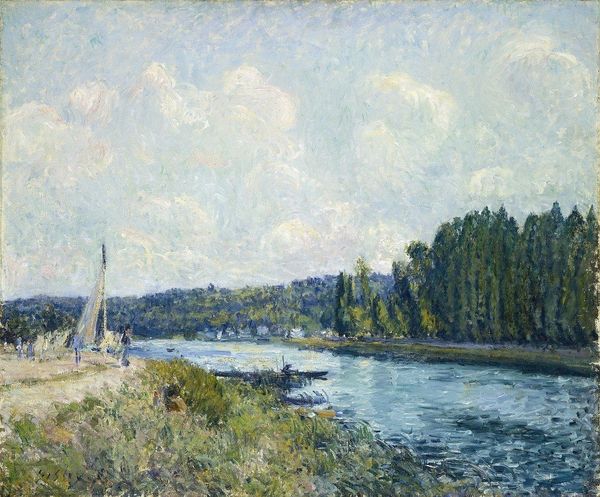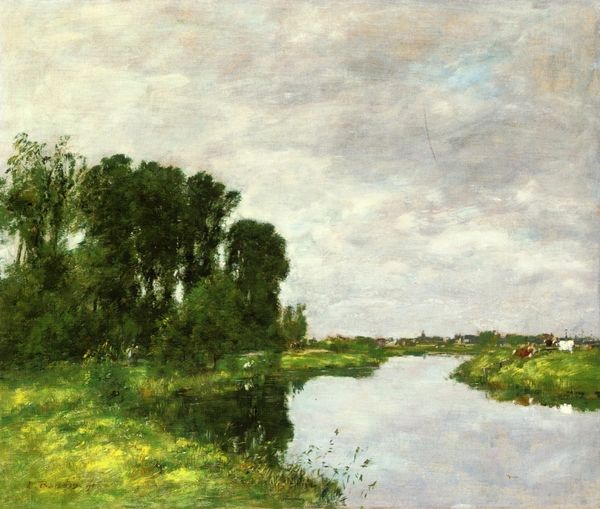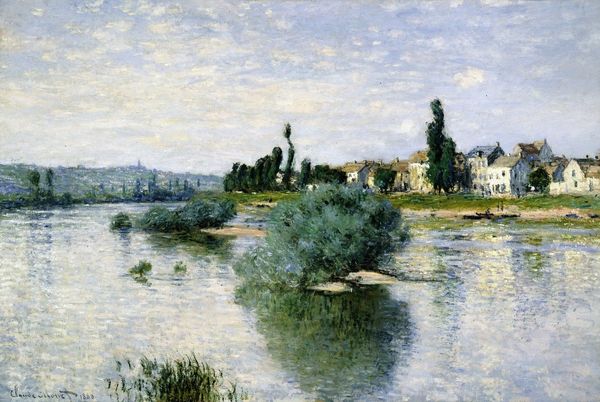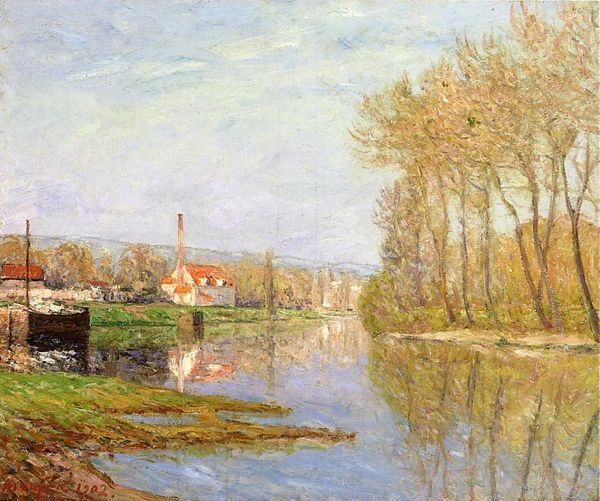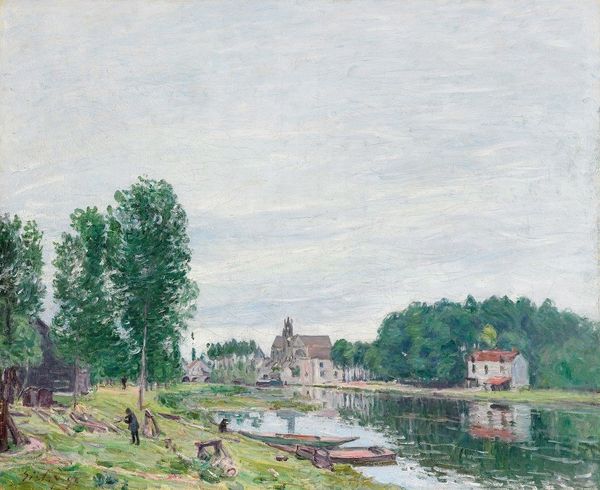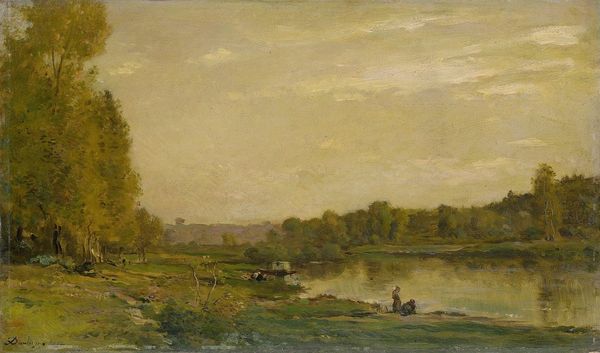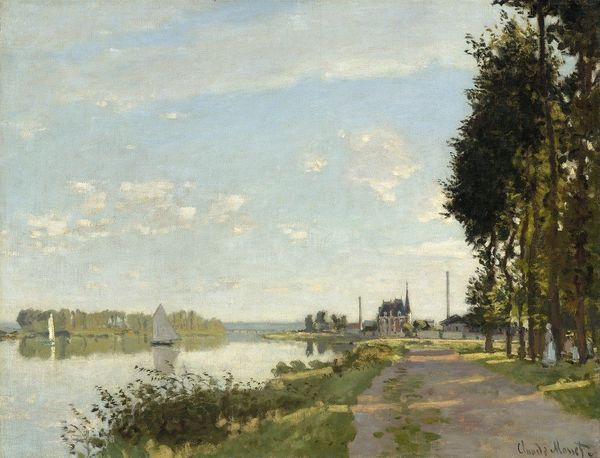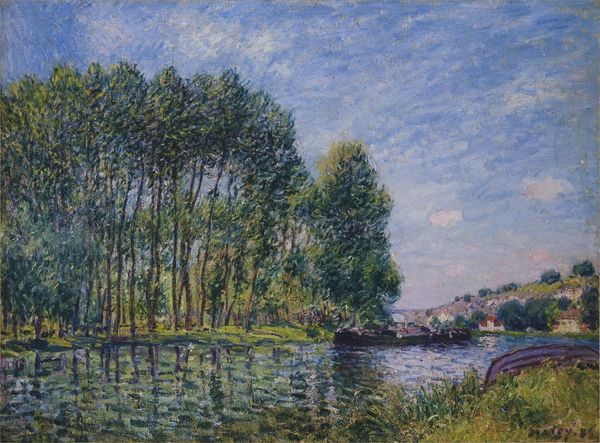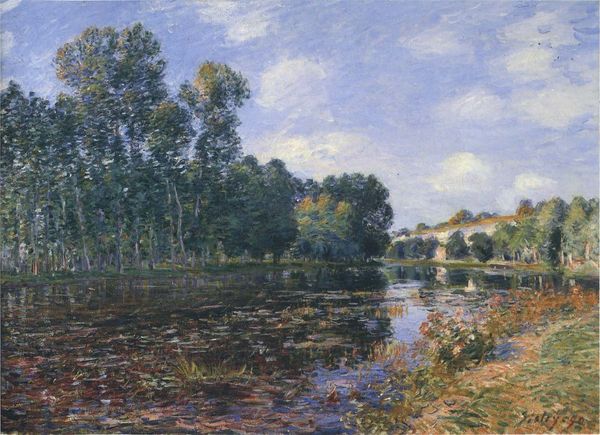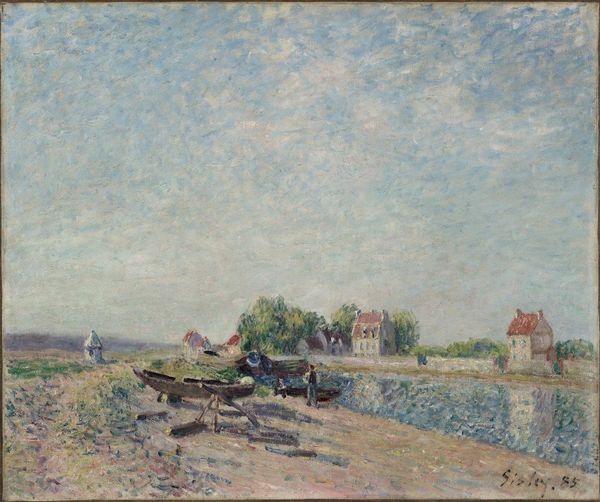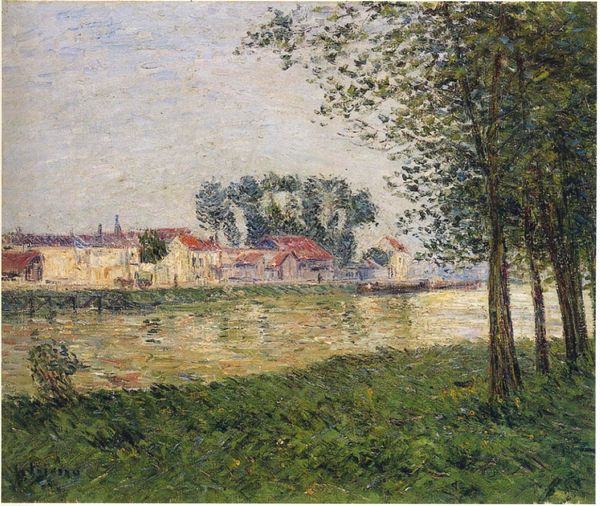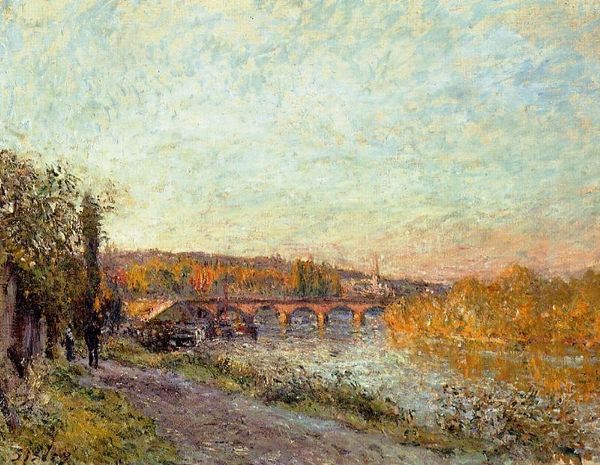
painting, plein-air, oil-paint
#
sky
#
painting
#
impressionism
#
plein-air
#
oil-paint
#
landscape
#
river
#
impressionist landscape
#
nature
#
oil painting
#
water
Dimensions: 51 x 65 cm
Copyright: Public domain
Curator: Alfred Sisley's "The Island of Saint Denis," created in 1872, offers a glimpse into the evolving Parisian suburbs through the lens of Impressionism. Editor: My immediate impression is of a rather subdued, contemplative mood. The hazy atmosphere and muted color palette give it a certain stillness. Curator: Indeed. What strikes me is the socioeconomic context of Impressionist landscapes, moving beyond romantic pastoral scenes and capturing sites undergoing rapid industrialization and urbanization. This area of Saint Denis was experiencing immense change, its identity caught between rural and industrial. Editor: The composition reinforces that. See how the river acts as a visual division, separating the clustered buildings on the left bank from the open fields beyond the island? The light, although diffused, glimmers subtly on the water, reflecting the sky's tones and guiding your eye along the river's curve. Curator: Right. And that division speaks volumes about class and labor at the time. The Isle of Saint Denis and its surrounding areas were home to working-class communities and industrial sites—locations often excluded from traditional landscape painting. Sisley's focus brings their realities into view. Editor: I’m drawn to the paint application. The broken brushstrokes capture the ephemeral quality of light and atmosphere. Observe the subtle gradations in the sky and the way the reflections are rendered—it's a symphony of tones. It's not about precise detail, but the sensation of being there. Curator: That "sensation" is part of what made Impressionism revolutionary. These painters rejected academic conventions in favor of a more subjective representation of the world around them, even—or especially—as that world shifted and became contested. Editor: Ultimately, it’s the interplay of form, light, and composition that create a timeless resonance. Curator: For me, this painting is powerful because it highlights a pivotal moment in Parisian history, demonstrating art's capacity to capture and contextualize the shifting social landscapes of its time.
Comments
No comments
Be the first to comment and join the conversation on the ultimate creative platform.
